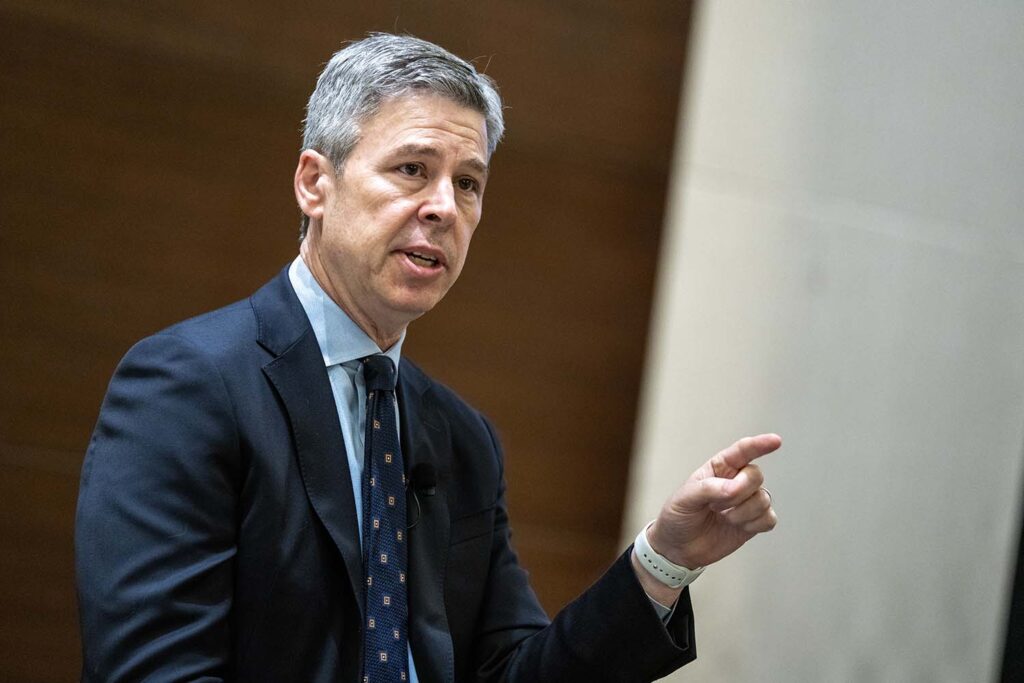
WASHINGTON—Electric cooperatives that have applied for funding under the U.S. Department of Agriculture’s $9.7 billion Empowering Rural America Program could begin to see award announcements in late summer, Rural Utilities Service Administrator Andy Berke told co-op leaders at NRECA’s Legislative Conference.
Projects proposed by 17 generation and transmission co-ops—representing more than 100 distribution co-ops—have so far been given the go-ahead by RUS to move to the next level in the application process, Berke said.
“We’re seeing amazing proposals from the co-op community,” he said.
The New ERA clean energy program, which is exclusively for electric co-ops, debuted in the 2022 Inflation Reduction Act. It provides grants and loans to co-ops for new and innovative clean energy systems, including carbon capture, energy storage, renewables, nuclear energy and generation and transmission efficiency.
“It’s the next type of forward-facing infrastructure that rural America needs,” Berke said April 23 at the conference attended by more than 1,200 co-op leaders.
The co-op response to the program has been overwhelming, with about $46 billion in requests coming in—or about five times the available funding. Project ideas, detailed in 160 letters of interest from co-ops, have included solar, wind, nuclear and carbon capture, Berke said.
“We are neutral about which technology co-ops should use,” he said. “We wanted to ensure you can do what works best for you.”
Berke said he hopes Congress will provide more money for co-ops in the future, given the intense interest.
“A lot of great ideas are not going to get funded because there’s just not enough money,” he said.
Co-ops have also tapped into the Powering Affordable Clean Energy (PACE) program, which provides a total of $1 billion for energy projects that use wind, solar, hydropower, geothermal, biomass or renewable energy storage.
Berke cited Trico Electric Cooperative in Marana, Arizona, which is in line for $83.5 million in PACE funding to expand its battery energy storage system capacity.
“It’s inspiring to get to travel the country and talk to co-op leaders and see the areas you serve,” he said. “Co-ops just get it done every day.”
The core RUS program—the Electric Infrastructure Loan and Loan Guarantee Program that helps finance the construction of distribution facilities in rural areas—reached a record in funding obligations of $6.88 billion last year, Berke said.
“That is a huge amount of funding to ensure you can do the work you need to do,” he said.
Erin Kelly is a staff writer for NRECA.